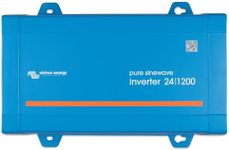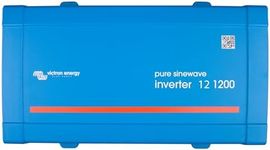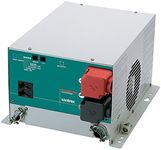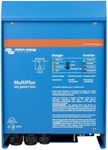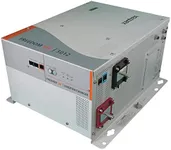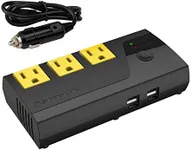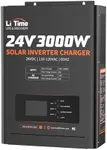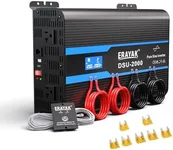Buying Guide for the Best Marine Inverter
Choosing the right marine inverter is crucial for ensuring a reliable power supply on your boat. A marine inverter converts the DC power from your boat's batteries into AC power, which is used to run household appliances and other electronic devices. When selecting a marine inverter, it's important to consider several key specifications to ensure it meets your needs and provides efficient and safe power conversion. Understanding these specifications will help you make an informed decision and choose the best inverter for your marine environment.Power Output (Wattage)Power output, measured in watts, indicates the maximum amount of power the inverter can supply to your devices. This is important because it determines what and how many devices you can run simultaneously. Inverters typically come in different power ranges: low (up to 1000 watts), medium (1000-3000 watts), and high (3000+ watts). To choose the right power output, list all the devices you plan to use and their wattage requirements, then select an inverter that can handle the total wattage plus a little extra for safety.
Waveform TypeThe waveform type refers to the shape of the AC power output. There are two main types: modified sine wave and pure sine wave. Modified sine wave inverters are more affordable and suitable for simple devices like lights and fans. Pure sine wave inverters produce a cleaner power output, similar to the power from the grid, and are necessary for sensitive electronics like laptops, medical equipment, and some appliances. Choose a pure sine wave inverter if you plan to power sensitive or high-end electronics.
Input VoltageInput voltage is the DC voltage that the inverter requires from your boat's battery system. Common input voltages are 12V, 24V, and 48V. The choice depends on your boat's battery setup. Most small to medium-sized boats use 12V systems, while larger boats may use 24V or 48V systems for greater efficiency. Ensure the inverter's input voltage matches your battery system to avoid compatibility issues.
EfficiencyEfficiency indicates how well the inverter converts DC power to AC power, expressed as a percentage. Higher efficiency means less energy is lost during conversion, which is important for maximizing battery life and reducing energy waste. Inverters typically have efficiencies ranging from 85% to 95%. Choose an inverter with higher efficiency to ensure more of your battery power is used effectively.
Size and WeightSize and weight are practical considerations, especially in the confined spaces of a boat. Inverters come in various sizes and weights, and it's important to choose one that fits the available space and can be securely mounted. Consider where you plan to install the inverter and ensure it has adequate ventilation to prevent overheating. A compact and lightweight inverter is easier to install and manage in tight spaces.
Safety FeaturesSafety features protect both the inverter and your devices from damage. Important safety features include overload protection, short circuit protection, over-temperature protection, and low battery shutdown. These features help prevent accidents and extend the lifespan of your inverter and connected devices. Choose an inverter with comprehensive safety features to ensure reliable and safe operation.
Durability and Build QualityDurability and build quality are crucial for marine environments, where equipment is exposed to harsh conditions like saltwater, humidity, and vibrations. Look for inverters with robust construction, corrosion-resistant materials, and a good IP rating (Ingress Protection) to withstand these conditions. A durable inverter will provide reliable performance and longevity in the demanding marine environment.

